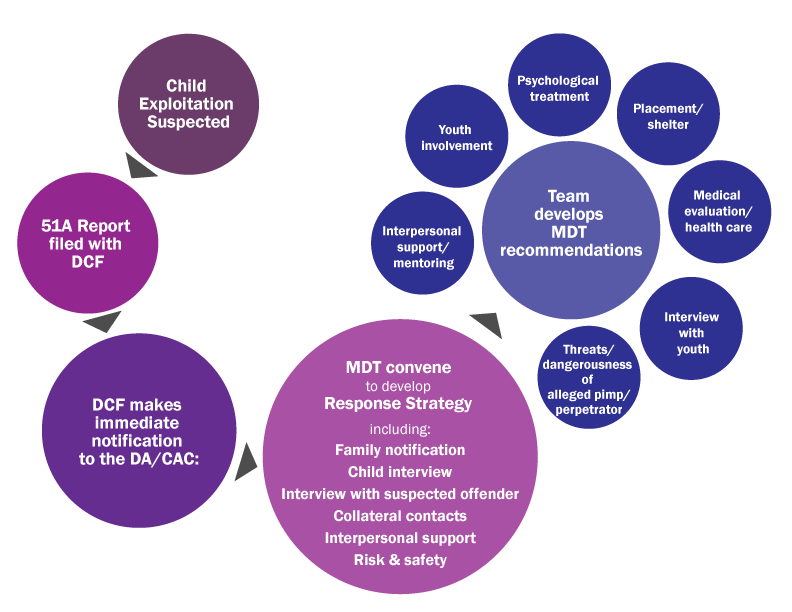SEEN MDT Response
It is difficult for parents and providers to imagine that a child or youth they care about may be a victim of sexual exploitation. It can be extremely difficult for youth to come forward and ask for help, so knowing the red flags can help you identify possible exploitation.
Filing a Report
Whenever exploitation is suspected, mandated reporters must file a report of suspected child abuse (51A) with the Department of Children & Families. The 51A report initiates a referral to SEEN and allows SEEN to communicate with the other agencies and organizations involved with a youth at risk for CSEC. If you are not a mandated reporter, you can still file a 51A, or you can contact the SEEN program directly for assistance.
- Guide to Responding to Exploited Youth (English | español | português)
- Mandated Reporting and CSEC: Frequently Asked Questions
If you have filed a 51A, you can also alert SEEN that you have made a report by calling 617-304-4263.
What to Expect
Filing a 51A report of suspected child trafficking or commercial sexual exploitation triggers a multi-disciplinary intervention. Even when a child is involved with multiple systems, CSEC may be overlooked or undetected. Recognizing that one system alone may not have the capacity to effectively respond to CSEC cases, SEEN convenes Multidisciplinary Teams (MDTs) to provide tailored support, streamline information-sharing, and collectively ensure youths’ needs are met, gaps in service are identified, and perpetrators are held accountable.

